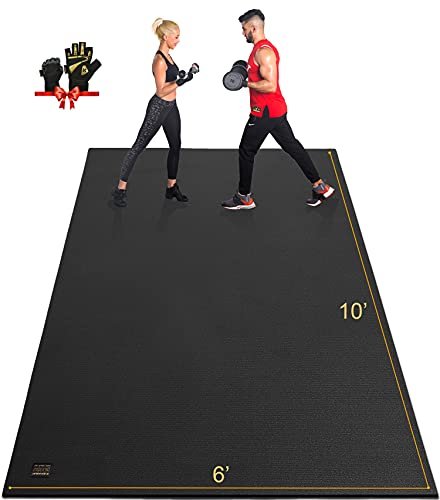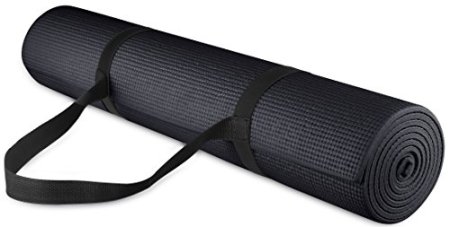Introduction to Exercise Mats
What Are Exercise Mats?
Exercise mats are specialized mats designed to provide a comfortable, stable surface for various physical activities. They are commonly used for workouts like yoga, pilates, and strength training, offering cushioning and support to enhance performance and safety.
Importance of Exercise Mats in Workouts
Exercise mats are essential for creating a safe and comfortable workout environment. They help reduce impact on joints, prevent slipping, and provide a designated space for your exercises, which can lead to better results and a more enjoyable workout experience.
Types of Exercise Mats
There are several types of exercise mats, each designed to cater to different needs. From basic foam mats to advanced materials like TPE, choosing the right type depends on your workout preferences and requirements.
Benefits of Using Exercise Mats
Comfort and Cushioning
One of the primary benefits of exercise mats is the added comfort they provide. The cushioning helps reduce strain on your joints, making exercises more comfortable and less likely to cause injury.
Safety and Stability
Exercise mats offer improved stability during workouts. Their non-slip surfaces prevent you from slipping, which is crucial for maintaining proper form and avoiding accidents.
Improved Performance and Effectiveness
By providing a stable and cushioned surface, exercise mats can enhance the effectiveness of your workouts. They allow you to perform exercises with better form and focus, potentially leading to improved results.
Versatility in Workouts
Exercise mats are versatile tools that can be used for a wide range of activities, from stretching and yoga to strength training and cardio workouts. Their adaptability makes them a valuable addition to any home gym.
Key Features to Consider in Exercise Mats
Material and Thickness
The material and thickness of an exercise mat affect its comfort and durability. Common materials include foam, rubber, and PVC, each offering different levels of cushioning and support. Thicker mats provide more cushioning, while thinner mats offer better stability.
Non-Slip Surface
A non-slip surface is crucial for preventing accidents and ensuring a safe workout experience. Look for mats with textured surfaces or grips that provide traction and keep you from sliding during exercises.
Durability and Maintenance
Durability is an important factor when choosing an exercise mat. Opt for mats made from high-quality materials that can withstand regular use. Additionally, consider how easy the mat is to clean and maintain.
Portability and Storage
If you need to move your mat frequently or have limited storage space, choose a mat that is lightweight and easy to roll up or fold. Some mats come with carrying straps or bags for added convenience.
How to Choose the Right Exercise Mat
Assessing Your Fitness Needs
Consider your specific fitness needs when choosing an exercise mat. Think about the types of exercises you perform, your comfort preferences, and any special requirements you might have.
Comparing Different Types of Mats
Compare various types of exercise mats to find the one that best suits your needs. Evaluate factors such as material, thickness, and surface texture to make an informed decision.
Budget Considerations
Exercise mats come in a range of prices. Set a budget and look for a mat that offers the features you need within your price range. Remember that a higher price does not always mean better quality.
Reading Reviews and Recommendations
Check reviews and recommendations from other users to gauge the performance and durability of different mats. User feedback can provide valuable insights and help you choose the right mat.
Popular Types of Exercise Mats
Foam Mats
Foam mats are popular for their cushioning and comfort. They are ideal for low-impact exercises and provide excellent support for activities like yoga and stretching.
Rubber Mats
Rubber mats are known for their durability and slip-resistance. They are suitable for high-impact exercises and heavy equipment, offering a sturdy and stable surface.
PVC Mats
PVC mats are lightweight and easy to clean. They offer a good balance between cushioning and support, making them a versatile choice for various workouts.
TPE Mats
TPE (Thermoplastic Elastomer) mats are eco-friendly and provide excellent cushioning and grip. They are a great choice for those looking for a sustainable and high-performance option.
How to Use Exercise Mats Effectively
Proper Placement and Setup
Place your exercise mat on a flat, even surface for optimal performance. Ensure it is positioned correctly to provide adequate space for your workouts.
Cleaning and Maintenance Tips
Regularly clean your mat to prevent the buildup of dirt and bacteria. Follow the manufacturer’s cleaning instructions to maintain the mat’s condition and extend its lifespan.
Storage Solutions
Store your exercise mat in a cool, dry place when not in use. Roll or fold it properly to avoid creases and ensure it stays in good shape.
Combining with Other Equipment
Exercise mats can be used in conjunction with other fitness equipment, such as weights and resistance bands. Ensure that your mat provides sufficient space and stability for these additional tools.
Common Mistakes to Avoid with Exercise Mats
Using Mats on Uneven Surfaces
Avoid placing your mat on uneven or slippery surfaces, as this can affect its stability and increase the risk of injury.
Neglecting Regular Cleaning
Neglecting to clean your mat regularly can lead to the buildup of dirt and germs. Maintain a cleaning routine to ensure a hygienic workout environment.
Choosing Mats That Are Too Thin or Thick
Selecting a mat that is too thin or too thick can impact your comfort and performance. Choose a mat with the right thickness for your specific needs.
Ignoring Safety Guidelines
Follow safety guidelines for using your mat to prevent accidents and injuries. Ensure the mat is properly set up and used in accordance with the manufacturer’s instructions.
Success Stories and Testimonials
Real-Life Experiences with Exercise Mats
Many users have experienced significant improvements in their workouts and comfort levels by using exercise mats. These success stories highlight the benefits of incorporating a mat into your fitness routine.
How Exercise Mats Have Enhanced Workouts
Exercise mats have enhanced workouts by providing a comfortable and stable surface, allowing users to perform exercises more effectively and safely.
Tips from Users and Fitness Experts
Learn from the experiences of other users and fitness experts to get the most out of your exercise mat. Their tips and advice can help you maximize the benefits of your mat.
Maintaining Your Exercise Mat
Regular Cleaning Routines
Establish a regular cleaning routine to keep your exercise mat in good condition. Use appropriate cleaning products and techniques to remove dirt and prevent odors.
Inspecting for Wear and Tear
Regularly inspect your mat for signs of wear and tear. Address any issues promptly to ensure the mat remains safe and effective.
Proper Storage Techniques
Store your exercise mat properly to avoid damage and maintain its shape. Follow the manufacturer’s recommendations for storage to keep your mat in optimal condition.
Conclusion
Summary of Key Points
Exercise mats are essential tools for enhancing comfort, safety, and performance during workouts. By choosing the right mat and using it effectively, you can improve your fitness routine and achieve better results.
Final Recommendations for Choosing and Using Exercise Mats
Select an exercise mat that meets your needs and preferences, considering factors such as material, thickness, and features. Use the mat regularly, maintain it properly, and enjoy the benefits it brings to your fitness journey.
Frequently Asked Questions (FAQs)
What Is the Best Material for an Exercise Mat?
The best material depends on your needs. Foam mats are great for cushioning, while rubber mats offer durability and slip-resistance. PVC and TPE mats provide a balance of comfort and performance.
How Often Should I Clean My Exercise Mat?
Clean your exercise mat regularly, ideally after each use or at least weekly, to prevent dirt and bacteria buildup. Follow the manufacturer’s cleaning instructions for best results.
Can I Use an Exercise Mat for Outdoor Workouts?
Yes, you can use exercise mats for outdoor workouts, but choose a mat designed for outdoor use and ensure it is placed on a stable, clean surface.
What Thickness Should My Exercise Mat Be?
The ideal thickness depends on your activities and preferences. Generally, mats that are 1/4 to 1/2 inch thick offer good cushioning and stability for most exercises.
How Do I Store My Exercise Mat Properly?
Store your exercise mat in a cool, dry place. Roll or fold it properly to avoid creases and ensure it remains in good condition. Use a carrying strap or bag if available.
Feel free to review this content and let me know if you need any adjustments or additional details!

































































